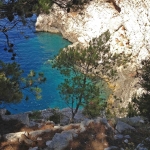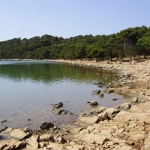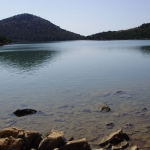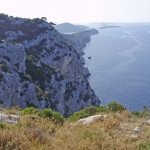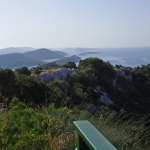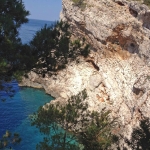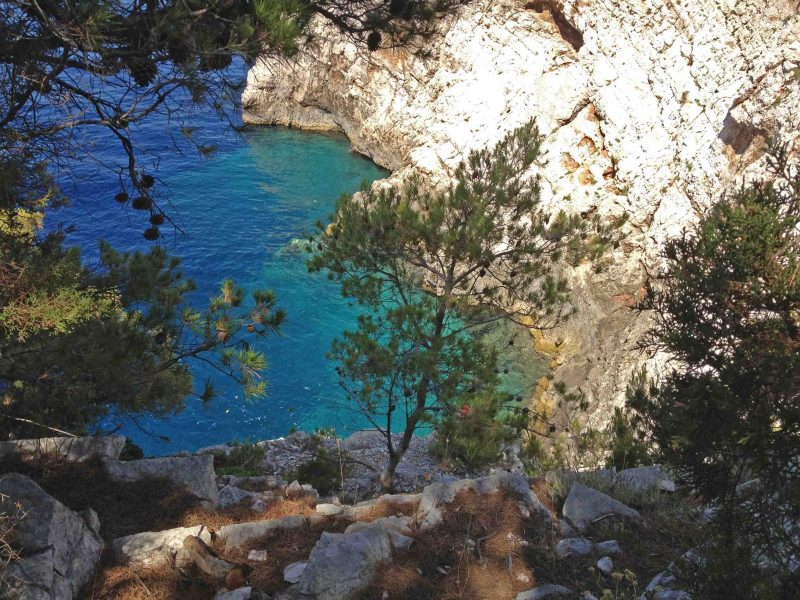One of the great attractions for visitors of Croatia is it’s magnificent and varied nature. Here I describe a special nature park: Nature park Telašćica! Mainly visited by tourists during the hot summer months, but in late spring and autumn this place is also beautiful to visit. The park consists mainly of the blue water of the Adriatic sea that surrounds the many islands in the area. This is a great park to explore by boat, visit the bay of Telašćica, the cliffs of the island ‘dugi Otok’, and the salt water lake ‘Mir’ on the island.
The Telašćica bay, which gave the Nature Park its name, is situated on the south-eastern part of the island Dugi otok. The bay itself is very indented with 25 bays, capes and 5 islands. Thanks to its position it is protected from the north-eastern wind from the mainland and the south wind from the open sea. Because of these features, Telašćica is one of the largest and best protected natural harbours on the eastern coast of the Adriatic. The name „Telaščica“ probably derives from the Latin name of “tre lagus” which means “three lakes”. These three lakes are actually morphogenetic Karst sinkholes, which ended up under the sea some 10.000 years ago after the last Ice Age.
Lake “Mir” is located in the south-western part of NP Telašćica, situated in a narrow area of land between the bay Telašćica and the open sea. After the last Ice Age the sea level rose to approximately 120 meters when the karst depression met the sea, which it penetrates through numerous underground cracks, especially on the north side. The lake, with its maximum depth of 6m, is salty because its underground channels are connected with the sea. The salt concentration of the lake is higher than the surrounding sea due to evaporation, very small changes in water levels have been found since the cracks which connect the lake with the sea area are of low porosity. On the south-eastern part of the lake, the sea tends to spill over into the lake during storms.
Temperature amplitudes of the lake are very large – in summer to 33 ºC and winter to 5 ºC – so the lake is warmer than the coastal sea in the summer and colder in winter due to the shallowness of the lake. These extreme conditions are the cause of biological poverty of the lake, apart from the plankton, there are only a few species of marine organisms that can live here, like algae, mullets, sea-bass, several species of shellfish, snails, crabs and a special type of eel (called “kajman” or “bižat” by the locals) which can grow up to 3 kg.
Stene
On the open-sea side of the Telašćica bay, vertical cliffs rise forming the most distinguished cliff on the Adriatic sea, the famous “Stene” of Dugi otok. This area has a rich and interesting flora and fauna, and even dolphins can be seen next to the cliffs, and on the cliffs under the sea different corals live – including red coral. The cliffs above sea level are the nesting place of the Peregrine and Eleonora’s Falcon; Telašćica has been enlisted to the Important Bird Areas due to the breeding of these birds here. Along the cliffs in the sea depths, the gorgonian corals Eunicella cavolinii and Paramuricea clavata, and sponges like the Axinella cannabina species, can be found. At greater depths colonies of the red coral Corallium rubrum, which is an endangered species, can be found.
Additional information, leaflets, tickets, licenses, and publications are available in the bay Mir on Grpašćak in the park (during summer season) or the public institution “Nature Park Telašćica“ in Sali (all year round). The park is open for visiting throughout the year.
Notice: You can not get food and other supplies in the park out of the summer season!!!
Tourist information for Dugi otok – click here
Tourist information for Telašćica – click here

